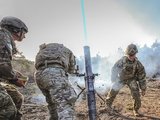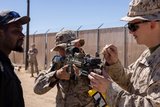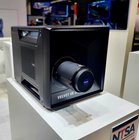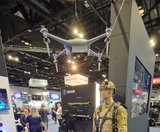Cubic tailors mortar simulator for the US Army
The company’s mortar trainer received improvements based on soldier’s feedback.
The US Navy has installed a number of interim virtual training systems for Littoral Combat Ship (LCS) crew training while the LCS Training Facility (LTF) is being constructed at Naval Station Mayport.
Two simulators and a virtual reality lab (VRL) recently began operations in existing buildings at Mayport.
The 18-seat VRL provides class-based Engineering Plant Technician courses for ship familiarisation, propulsion generation and common machinery maintenance to waterjets and watch challenges. Seated in front of three-screen workstations, trainees wear headsets to communicate with their instructors as they control avatars to accomplish tasks and procedures just as they would on board a real warship.
A bridge simulator and bridge part task trainer are being used to give crew in-depth understanding of the LCS ship class and better knowledge of the engineering plant, and to enable crew to help keep their skills fresh while they are in port.
An LCS Launch Handling and Recovery System (LHRS) crane simulator is also under construction to allow deck personnel to practice moving equipment, including Rigid Hull Inflatable Boats and CONEX boxes, inside the Freedom variant LCS. Sailors carry a real-world operator console to control a virtual ship's crane on a large screen display.
An LCS Integrated Tactical Trainer (ITT) is also being built, including a full-scale simulation based on exact replicas of the Freedom variant bridge and bridge wings, complete with .50 cal trainers, plus the ship's mission control centre. Designed for integrated crew training, qualification and certification, the simulator is expected to be online beginning in June 2018.
The ITT will be a permanent fixture in Mayport's existing building, unlike the temporary installations of the VRL, bridge part task trainer and the LHRS simulator, all of which will be moved to LTF Mayport after its construction is completed.
The first phase of LTF Mayport is expected to be finished in April 2018, and will comprise five 24-seat virtual reality labs, a Freedom variant mission bay trainer and the bridge part task trainer and LHRS crane simulator currently housed in existing buildings. Phase II, which will include ten virtual reality labs, two Freedom ITTs and another bridge part task trainer, is expected to achieve initial operational capability in 2021.

The company’s mortar trainer received improvements based on soldier’s feedback.

The company will operate in two new locations in the coming years to better support US services.

This type of tool provides more realistic training easing the incorporation of new scenarios that accurately represent the threats of the battlefield.

The Engineering Corps has been conducting individual instruction using FLAIM Systems’ Sweeper and should start collective deployments in 2025.

The next-generation platform is motion-compatible and can be used in OTW and NVG applications.

The system can be used to prepare soldiers for both drone offensive operations and CUAS missions.